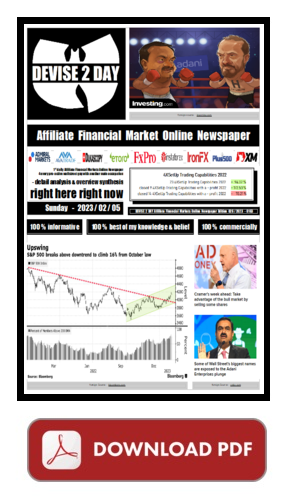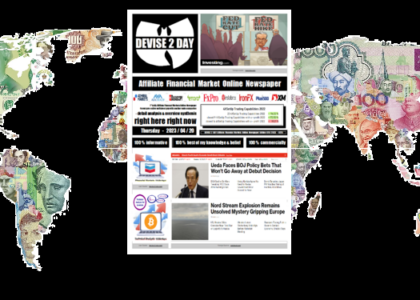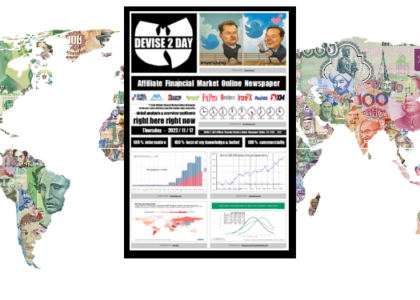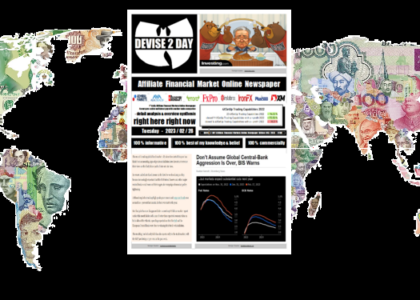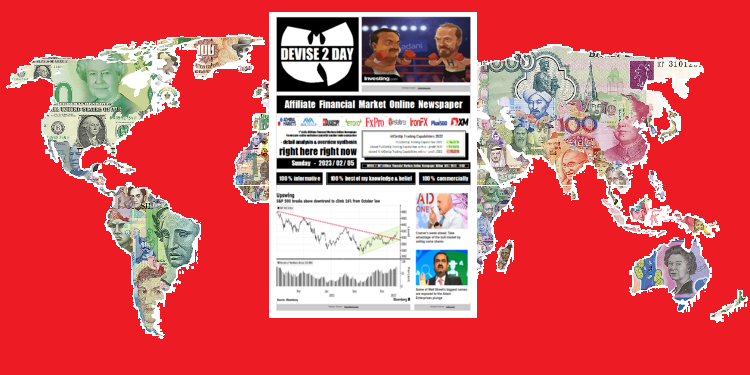
2023/02/05 (163.026) Technical Analysis – … & IDC-EURUSD
2.3 Steps Forward & 1.2 Steps Back
– It Can Go On Like This In The EURUSD Pair
Financial markets saw more movement after the Fed, ECB and BoE made their interest rate decisions. The stock markets in Europe and the USA reacted friendly, Japan reacted with a sideways movement. China’s markets, on the other hand, were under selling pressure.
There was a noticeable relaxation on the bond market and as a result there was a stronger inversion of the yield curve (short-term interest rates higher than long-term interest rates). 10-year Bunds are yielding 2.06% this morning (previous day 2.28%) and 10-year US government bonds are yielding 3.38% (previous day 3.42%). This makes it clear that, firstly, the policy of the central banks seems to have been priced in and, secondly, that the market sees inflation as less of a problem in the future. Which is why I also assume that we will not experience any negative surprises in relation to US inflation. And that the US dollar should continue to lose nominal value. And we maintain our EURUSD long trading capability.Nevertheless, the USD gained ground against the EUR in the last lapsed week. While gold and silver came under significant selling pressure.
ECB Increases Key Interest Rate By 0.50%
The ECB has raised the key interest rate by 0.50% to 3.00% (interest rate now at 2.50%). The course taken would be maintained. Another move of 0.50% is due in March. Then the course would be re-evaluated. There is a very large consensus within the Governing Council. The ECB initially expects weak growth, but the economy is more resilient than expected. The risks to growth and the inflation outlook are more in balance.
After being an outspoken critic of the dovish expansionary ECB monetary policy last year 2022, I can write nothing else in this year 2023 than praising the EUB. Because the ECB has successfully mastered several issues. She set a clear course on interest rate policy, notably the upcoming 0.50% rate hike at the March meeting. In doing so, it acted transparently in its mandate to combat inflation. The reaction on the bond market must be interpreted as an expression of the regained confidence of market participants. The market reaction also implicitly suggests that the ECB has been successful in anchoring inflation expectations at low levels. At the same time, it implicitly offered a tender exit scenario from the rate hike policy. Chapeau, more was not possible.
Bank Of England Raises Interest Rates By 0.50%
The UK central bank has hiked interest rates for the tenth time in a row. As expected, the key interest rate was raised on Thursday from 3.50% to 4.00%. The decision was made by seven votes to two. Two MPC members voted to keep the base rate at 3.50%. It has been signaled that the rate hike cycle is coming to an end.
Unlike the eurozone, the UK economy is not resilient. This is reflected in the IMF’s GDP forecast for 2023 (-0.6%). The stress in the UK is also reflected in the current biggest strikes in decades. Further aggressive interest rate moves would add to the stress for UK citizens. The problem in the UK, however, is that with consumer prices at 10.5%, further interest rate increases according to the textbook would be necessary. This dilemma is weighing on GBP valuation. However, should the GBP fall further, there would be more imported inflation. A so-called “vicious circle” is emerging. Which is why I switched from our GBPUSD long 4XSetUps to the EURUSD long 4XSetUps. Although I do believe the GBPUSD pair can rally as high as 1.35 GBPUSD. Should the BOE consistently fight UK inflation with higher interest rates. But I don’t want to get too greedy; therefore long in the EURUSD exchange rate. Although speculatively oriented readers may well remain long above GBPUSD 1.20.
Britain’s problem now seems to be that the ‘mantle of the EU’ has been roughly tossed into a corner. People rejoiced at the “freedom” brought about by Brexit. But the present is not much better than before – let alone the prospects for the future.
US Services Growth Tops ISM Forecasts As S&P Global US Services PMI Revised Higher
The ISM Services PMI for the US unexpectedly jumped to 55.2 in January of 2023, rebounding sharply from over a 2-1/2 year low of 49.2 in December, and beating market forecasts of 50.4. Capacity and logistics performance continued to improve and the majority of companies indicated that business is trending in a positive direction. Faster increases were seen for business activity/production (60.4 vs 53.5) and backlogs of orders (52.9 vs 51.5) while a rebound was recorded for new orders (60.4 vs 45.2). Also, employment was unchanged (50 vs 49.4) as some companies still find it difficult to fill open positions, while others are facilitating staff reductions. Also, price pressures eased (67.8 vs 68.1) and supplier deliveries (50 vs 48.5) indicated unchanged performance.
The S&P Global US Services PMI was revised slightly higher to 46.8 in January of 2023 from a preliminary of 46.6, but continued to point to a sixth straight month of falling services sector activity. Although easing from December (44.7), the fall in output stemmed from further weak domestic and external demand conditions, as new business and new export orders declined. Firms continued to expand their workforce numbers despite another fall in backlogs of work, but the pace of employment growth slowed further amid reports of cost-cutting efforts. Nonetheless, business confidence strengthened and was buoyed by increased spending on marketing and investment in cost efficiency. At the same time, cost inflation picked up for the first time in eight months. A sharper rise in input prices was not reflected in a quicker increase in output charges, however, as selling prices rose at the slowest pace since October 2020.
US NFP Beat Forecasts at 517K While US Wages Growth Slows as Expected
The US economy unexpectedly created 517K jobs in January of 2023, the most since July, and way above an average monthly gain of 401K in 2022, easily beating market forecasts of 185K. Job growth was widespread in January, led by gains in leisure and hospitality (128K), professional and business services (82k), and health care (58K). Employment also increased in government (74K), partially reflecting the return of workers from a university strike in California. Other gains were seen in retail trade (30K), construction (25K), transportation and warehousing (23K) and manufacturing (19K). There were also big revisions, with employment gains in November and December combined being 71K higher than previously reported. The January data continued to show a tight labour market although some companies prepare for an economic slowdown and the tech layoff continues.
Average hourly earnings for all employees on US private nonfarm payrolls rose by 10 cents, or 0.3%, to $33.03 in January of 2023, following an upwardly revised 0.4% gain in the prior month, matching market forecasts. This was the smallest growth in average hourly earnings in four months. In January, average hourly earnings of private-sector production and nonsupervisory employees rose by 7 cents, or 0.2%, to $28.26. Over the past 12 months, average hourly earnings have increased by 4.4% in January, the least since August of 2021 and slightly above market estimates of 4.3%.
US Wages Annual Growth At Near 1-1/2-Year Low While US Jobless Rate Falls To Over Five-Decade Low
Average hourly earnings for all employees on US private nonfarm payrolls increased by 4.4% from a year earlier in January of 2023, after an upwardly revised 4.8% rise in the prior month and slightly above market estimates of 4.3%. It was the smallest annual growth in average hourly earnings since August of 2021.
The unemployment rate in the US inched lower to 3.4 percent in January 2023, the lowest level since May 1969 and below market expectations of 3.6 percent, as the number of unemployed people declined by 28 thousand to 5.69 million and the number of employed increased by 894 thousand to 160.1 million. The latest jobs report came on the heels of a sharp decline in weekly jobless claims to nine-month lows and a larger-than-expected increase in the level of job openings in December to a five-month high, pointing to a still-tight labor market.
DXY Recovers from 9-Month Low And/Or US Treasury Yields Extend The Rise After NFP, ISM Data
The dollar index rose to above 102 on Friday, recovering from a nine-month low of 100.82 in the previous session, after the latest jobs surprised on the upside complicating the Federal Reserve’s quest to slow down the pace of tightening. The US economy added 517K jobs in January, the most since July and much above market expectations of 185K.
The yield on the US 10-year Treasury note, seen as a proxy for global borrowing costs, rose 15bps to 3.55% on Friday, after the payrolls report totally surprised on the upside, showing the US economy added 517K jobs and the unemployment rate fell to 3.4%. Also, the ISM Services PMI pointed to a way bigger-than-expected improvement in the services sector last month. The strong data added to evidence the US labour market remains strong and the economy continues to be resilient. Traders now see the Fed raising the fed funds rate to 5%-5.25% before pausing, above 5% expected before the payrolls release. Meanwhile, the two-year Treasury yields have climbed 20bps to 4.29% and the thirty-year one 10bps to 3.66%.
Wall Street Pares Losses
The Dow recovered from a 200-point drop to cross over into positive territory on Friday, with dip buyers emerging after upbeat US economic data added evidence that the economy remains resilient despite the rising headwinds from higher interest rates. The Labor Department’s closely watched employment report showed that US employers hired more workers than expected in January, with nonfarm payrolls increasing by 517,000 jobs last month. On top of that, ISM data showed that the services sector, which accounts for more than two-thirds of US economic activity, rebounded sharply in January. The S&P 500 and Nasdaq 100 also pared most of their losses but remained negative, as dismal earnings from Wall Street tech giants continued to weigh on sentiment. For the week, the Nasdaq 100 rallied roughly 4.9%, on track for a fifth consecutive weekly gain. The S&P 500 and the Dow added 2.6% and 0.5%, respectively, with both indexes poised for a second straight weekly gain.
good morning, good day, and/or good night
at whatever time, wherever you are !
right here right now :

